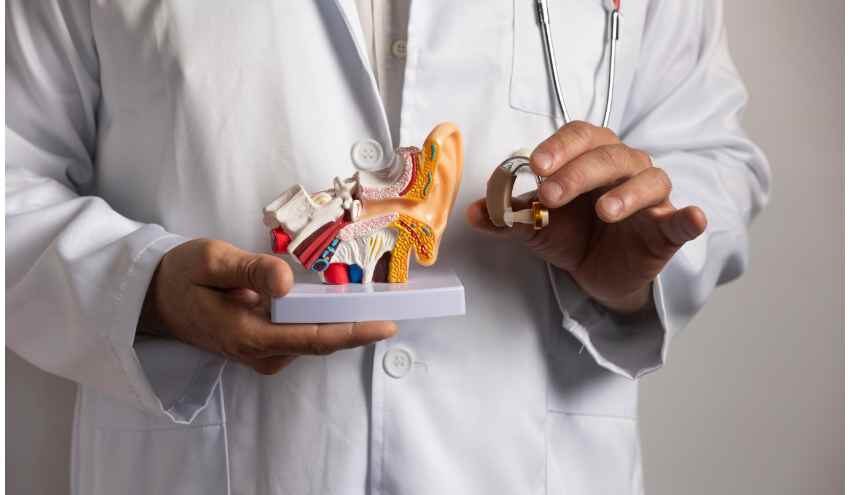Living with hearing loss doesn’t mean compromising on your quality of life or limiting your daily activities. Today’s advanced hearing technology offers a wide range of solutions designed to meet diverse needs, preferences, and lifestyles. From nearly invisible devices to powerful hearing aids with smart connectivity features, modern hearing technology solutions can help you reconnect with the sounds that matter most.
Understanding Modern Hearing Technology
The hearing aid industry has experienced remarkable technological advancement in recent years. Gone are the days when hearing devices were bulky, uncomfortable, and produced poor sound quality. Today’s solutions incorporate sophisticated digital processing, artificial intelligence, and wireless connectivity to deliver natural, clear sound in virtually any environment.
Digital Signal Processing Revolution
Modern hearing devices use advanced algorithms to distinguish between speech and background noise, automatically adjusting settings based on your surroundings. This technology helps users follow conversations in challenging environments like restaurants, meetings, or outdoor gatherings where traditional hearing aids might struggle.
Wireless Connectivity Features
Contemporary hearing solutions often include Bluetooth connectivity, allowing direct streaming from smartphones, televisions, and other devices. This seamless integration means phone calls, music, and media can be transmitted directly to your hearing devices, providing crystal-clear sound without interference.
Types of Hearing Solutions Available
Behind-the-Ear (BTE) Models These versatile devices sit comfortably behind the ear and can accommodate various degrees of hearing loss. Modern BTE models are significantly smaller than their predecessors while offering powerful amplification and advanced features like rechargeable batteries and smartphone app control.
In-the-Ear (ITE) Solutions Custom-fitted to your ear canal, ITE devices offer a more discreet appearance while maintaining excellent performance. These solutions are ideal for individuals who prefer a less visible option without sacrificing functionality or sound quality.
Receiver-in-Canal (RIC) Technology RIC devices combine the benefits of both BTE and ITE styles, featuring a small behind-the-ear component connected to a receiver placed in the ear canal. This design provides natural sound quality while remaining virtually invisible to others.
Completely-in-Canal (CIC) Options For maximum discretion, CIC devices fit entirely within the ear canal. While smaller in size, these advanced solutions still incorporate sophisticated technology to deliver excellent sound quality for mild to moderate hearing loss.
Advanced Features Enhancing Daily Life
Noise Reduction and Speech Enhancement
Modern hearing devices use sophisticated algorithms to identify and suppress background noise while amplifying speech frequencies. This technology is particularly beneficial in crowded environments where multiple conversations and ambient sounds compete for attention.
Directional Microphone Systems
Advanced microphone technology allows hearing devices to focus on sounds coming from specific directions, typically prioritizing speech from in front of the wearer while reducing noise from other directions. This feature dramatically improves conversation clarity in challenging listening situations.
Tinnitus Management
Many contemporary hearing solutions include built-in tinnitus therapy features, providing relief for individuals who experience ringing, buzzing, or other phantom sounds. These programs can be customized to provide the most effective relief for each person’s specific tinnitus symptoms.
Choosing the Right Solution for Your Needs
Selecting appropriate hearing technology involves considering multiple factors including your degree of hearing loss, lifestyle requirements, dexterity limitations, and aesthetic preferences. Professional guidance is essential to ensure you receive devices that will truly improve your daily communication and overall satisfaction.
When exploring your options, working with experienced professionals who offer comprehensive Hearing Solutions ensures you receive personalized recommendations based on your specific needs and circumstances. Professional fitting and ongoing support are crucial for achieving optimal results with any hearing device.
Adapting to Your New Hearing Technology
Initial Adjustment Period
Most people require several weeks to fully adapt to their new hearing devices. During this time, your brain relearns to process sounds you may not have heard clearly for months or years. Patience during this adjustment period is important for achieving the best possible outcomes.
Professional Programming and Follow-up
Regular appointments with your hearing professional allow for fine-tuning and adjustments as you become more familiar with your devices. These sessions ensure your hearing solutions continue to meet your changing needs and preferences over time.
Maintenance and Care
Proper maintenance extends the life of your hearing devices and ensures consistent performance. This includes regular cleaning, appropriate storage, and timely replacement of batteries or charging as needed.
Frequently Asked Questions
How long do modern hearing aids typically last? With proper care and maintenance, quality hearing devices typically last 5-7 years. Factors affecting longevity include daily usage patterns, environmental exposure, and how well you maintain the devices according to manufacturer recommendations.
Can I adjust settings on my hearing aids myself? Many modern hearing solutions come with smartphone apps that allow users to make basic adjustments like volume control and program selection. However, significant changes should always be made by your hearing professional to ensure optimal performance.
Will my hearing aids work with my existing technology? Most contemporary hearing devices offer Bluetooth connectivity compatible with smartphones, tablets, televisions, and other wireless devices. Your hearing professional can demonstrate these features and help you set up connections with your preferred devices.
How often should I have my hearing aids serviced? Regular check-ups every 3-6 months are recommended to ensure optimal performance, clean the devices professionally, and make any necessary adjustments. More frequent visits may be needed during the initial adjustment period.
Are there financing options available for hearing solutions? Many hearing care providers offer flexible payment plans and financing options to make quality hearing technology more accessible. Some insurance plans also provide coverage for hearing aids, and financing can help bridge any coverage gaps.
Conclusion
Modern hearing solutions offer unprecedented opportunities to improve communication, maintain social connections, and enhance overall quality of life. With advanced features like noise reduction, wireless connectivity, and personalized programming, today’s hearing technology can be seamlessly integrated into any lifestyle.
The key to success lies in working with qualified professionals who can guide you through the selection process, ensure proper fitting, and provide ongoing support. Don’t let hearing challenges limit your potential – explore the remarkable modern hearing technology solutions available today and take the first step toward better hearing and improved life satisfaction.
#Modern #hearing #technology #solutions #Healthy #Life #Essex



